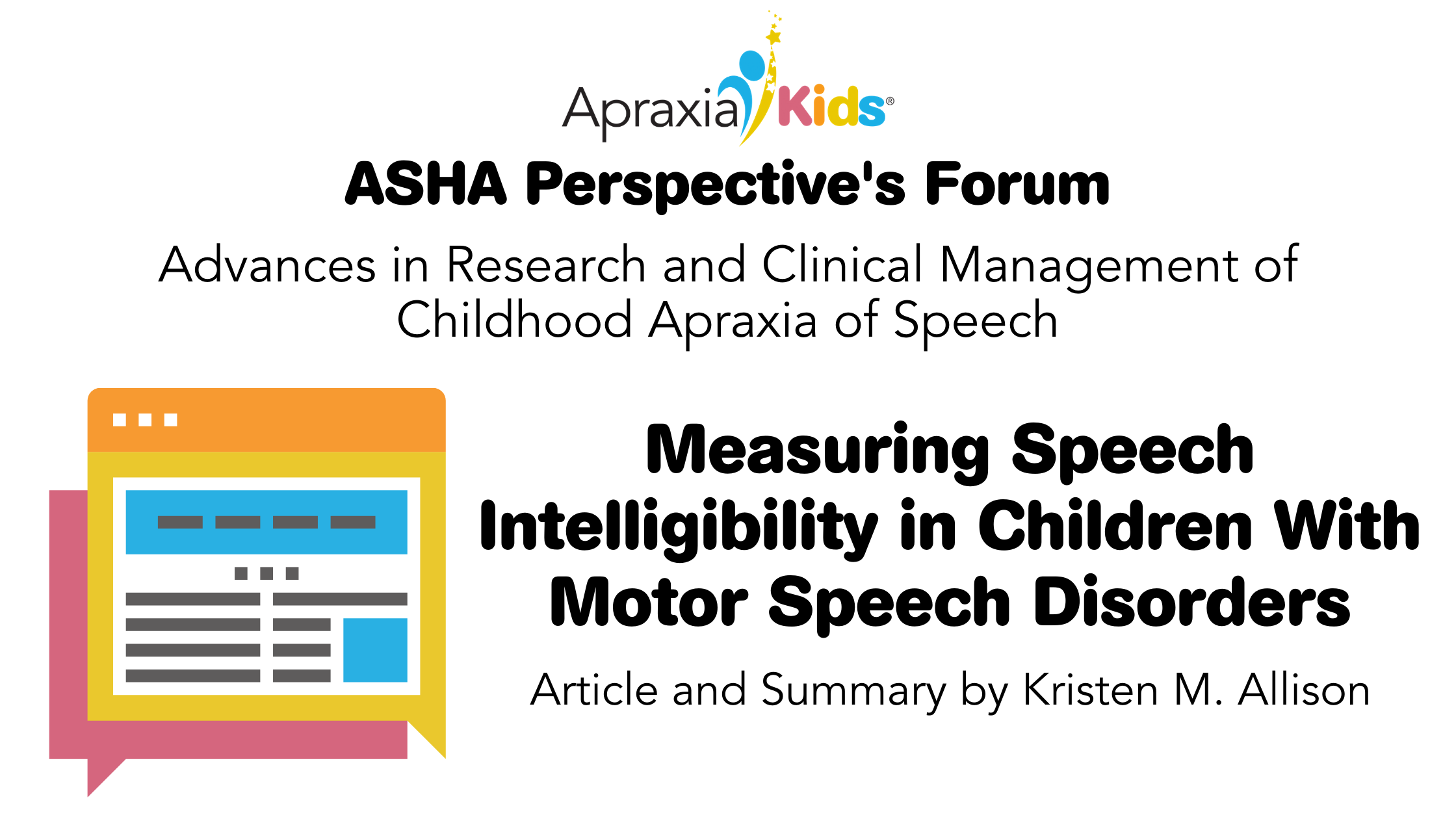
27 Aug Measuring Speech Intelligibility in Children with Motor Speech Disorders
Article and Summary by Kristen Allison, Ph.D. CCC-SLP
For many children with motor speech disorders, a key goal of speech therapy is to maximize intelligibility (i.e., how understandable the child’s speech is to others). Therefore, clinicians need objective and reliable ways to measure children’s intelligibility as part of evaluations and for tracking progress over time. Although procedures for objectively measuring intelligibility are routinely used in research studies, they can be challenging to implement in clinical settings.
The purpose of this tutorial is to review different approaches and tools for measuring intelligibility of children with motor speech disorders, and to provide recommendations for SLPs who want to improve how they measure intelligibility in their clinical practice. There are two primary approaches to measuring intelligibility: 1) word-identification approaches that involve having an unfamiliar listener orthographically transcribe what they think the child said, and 2) scaled ratings that involve making global judgments about a child’s intelligibility. Word identification approaches to intelligibility measurement are optimal for tracking progress in therapy, but are relatively time-consuming. Scaled rating approaches may be adequate in cases where the goal is to obtain an overall measure of severity or for children who are unable to participate in structured testing. The article discusses factors that affect intelligibility measurement, compares the pros and cons of different measurement approaches, and provides detailed information about how to measure intelligibility in clinical settings. Hope you find it helpful!
Perspectives of the ASHA Special Interest Groups, 2, May 2020
https://doi.org/10.1044/2020_PERSP-19-00110
Article and Summary by Kristen Allison, Ph.D. CCC-SLP
For many children with motor speech disorders, a key goal of speech therapy is to maximize intelligibility (i.e., how understandable the child’s speech is to others). Therefore, clinicians need objective and reliable ways to measure children’s intelligibility as part of evaluations and for tracking progress over time. Although procedures for objectively measuring intelligibility are routinely used in research studies, they can be challenging to implement in clinical settings.
The purpose of this tutorial is to review different approaches and tools for measuring intelligibility of children with motor speech disorders, and to provide recommendations for SLPs who want to improve how they measure intelligibility in their clinical practice. There are two primary approaches to measuring intelligibility: 1) word-identification approaches that involve having an unfamiliar listener orthographically transcribe what they think the child said, and 2) scaled ratings that involve making global judgments about a child’s intelligibility. Word identification approaches to intelligibility measurement are optimal for tracking progress in therapy, but are relatively time-consuming. Scaled rating approaches may be adequate in cases where the goal is to obtain an overall measure of severity or for children who are unable to participate in structured testing. The article discusses factors that affect intelligibility measurement, compares the pros and cons of different measurement approaches, and provides detailed information about how to measure intelligibility in clinical settings. Hope you find it helpful!
Perspectives of the ASHA Special Interest Groups, 2, May 2020
https://doi.org/10.1044/2020_PERSP-19-00110
Credentials:
Hours of Operation:
Treatment locations:
Address:
,
Phone:
Email:
Overall Treatment Approach:
Percent of CAS cases:
Parent Involvement:
Community Involvement:
Professional consultation/collaboration:
Min Age Treated:
Max Age Treated:
Insurance Accepted:




